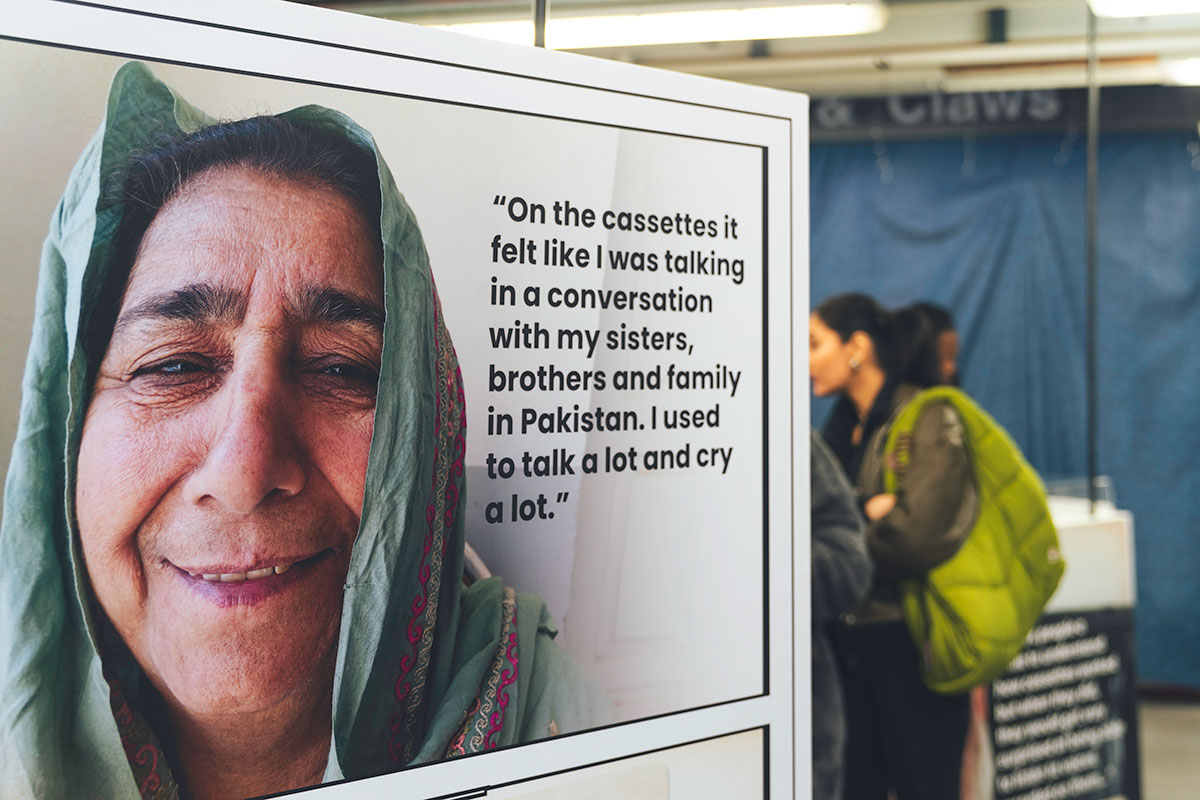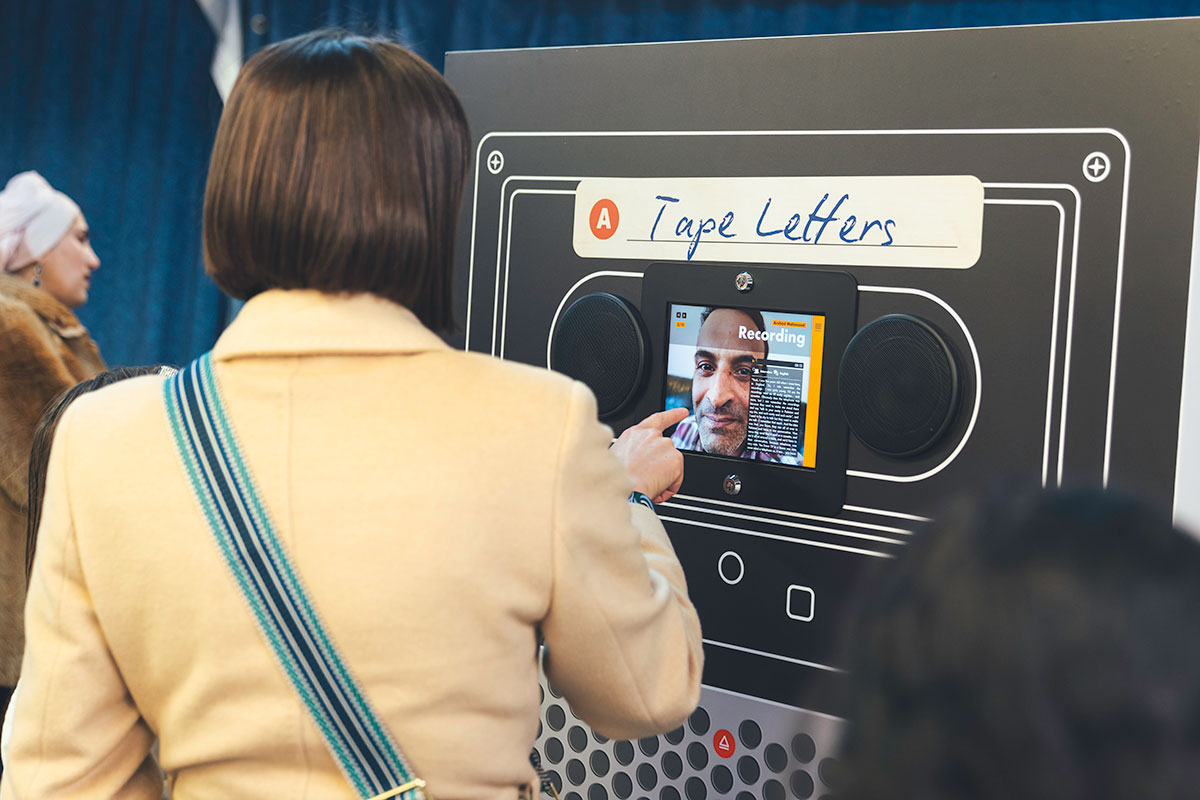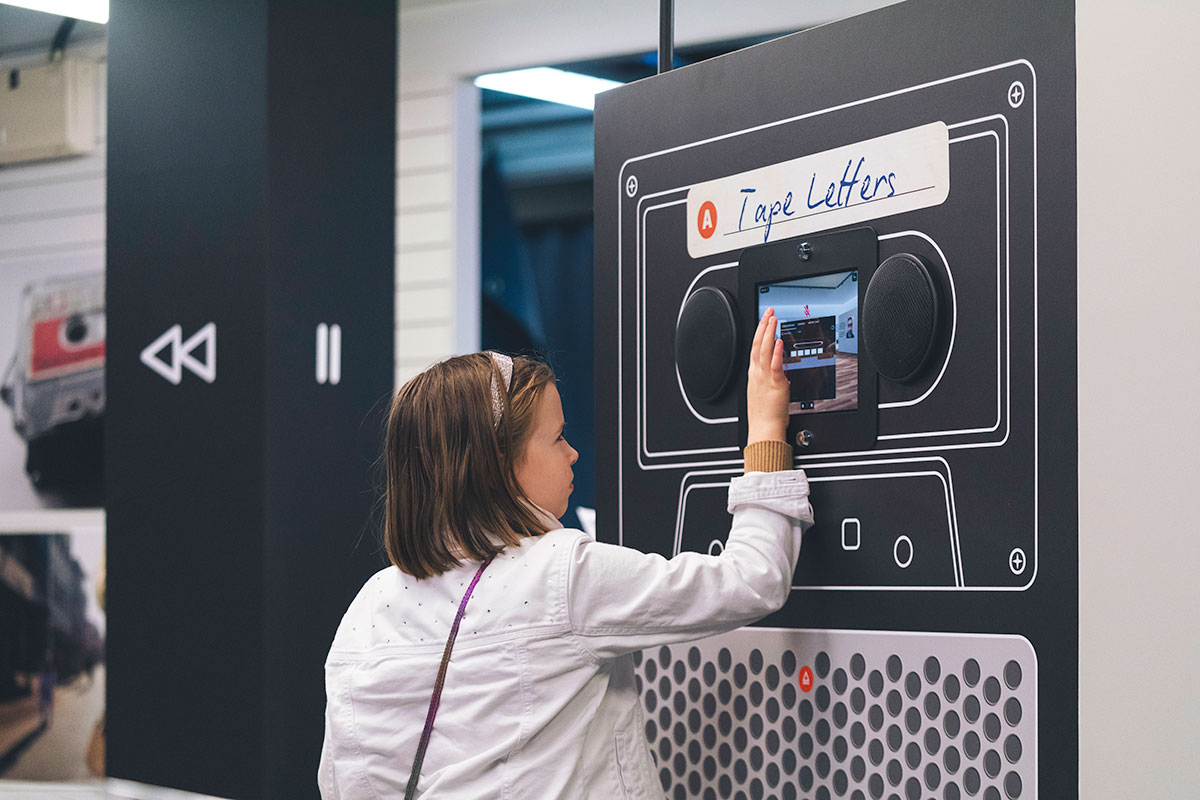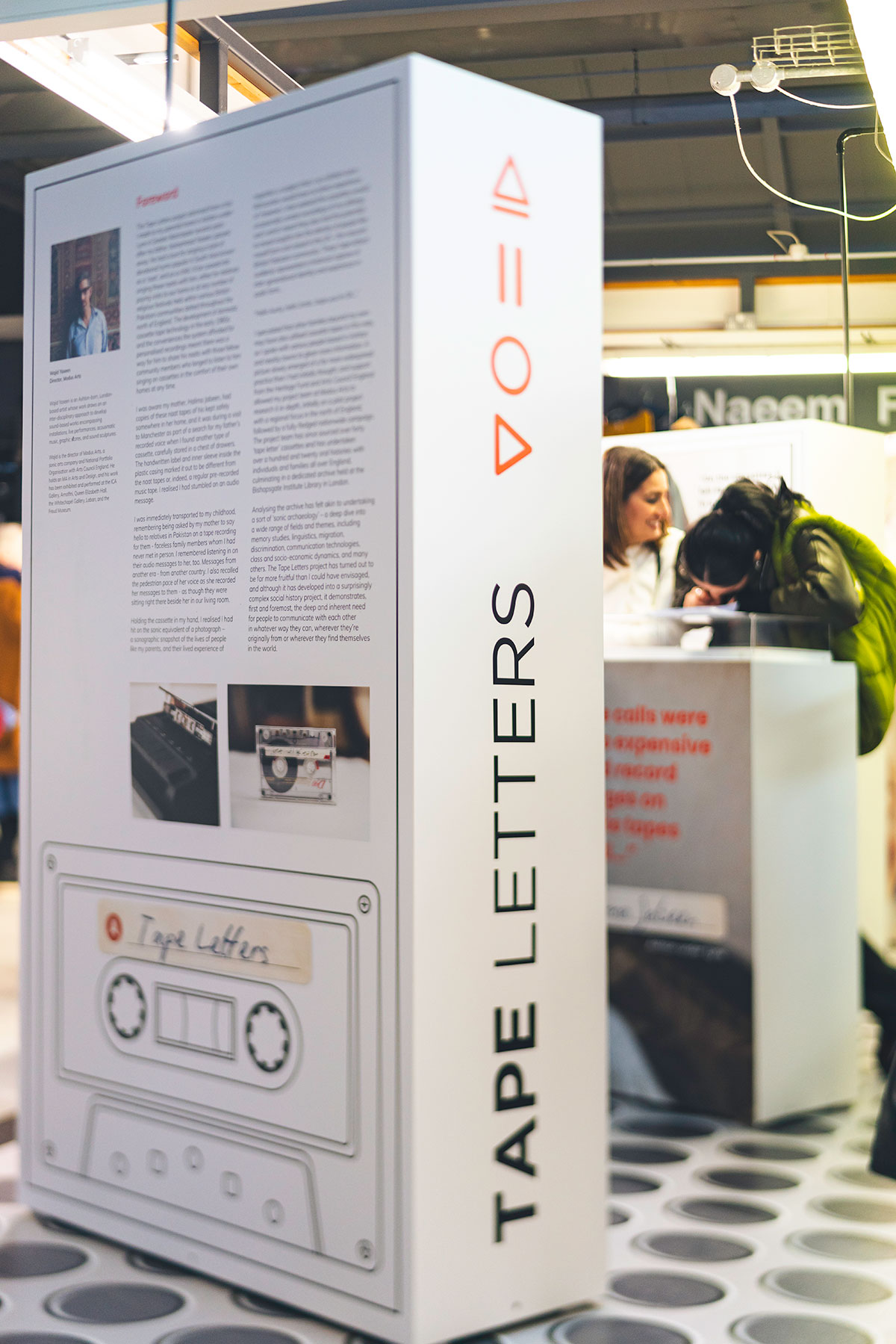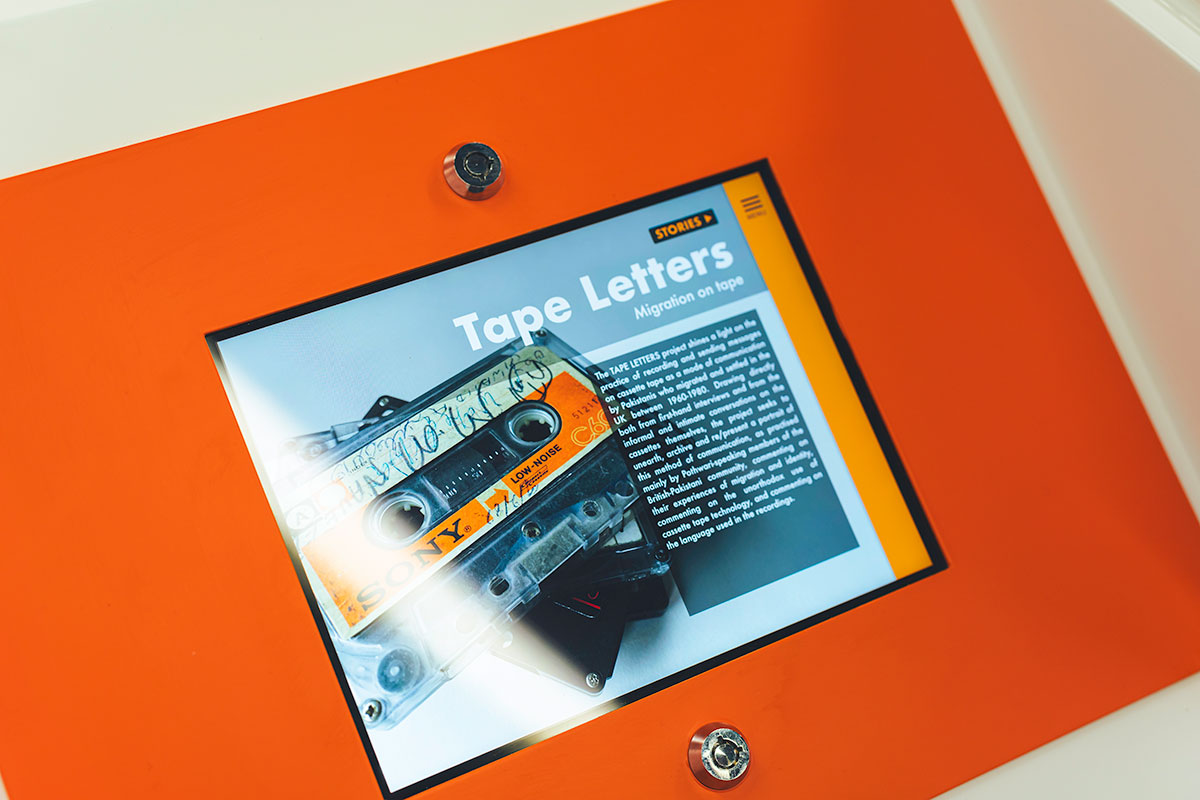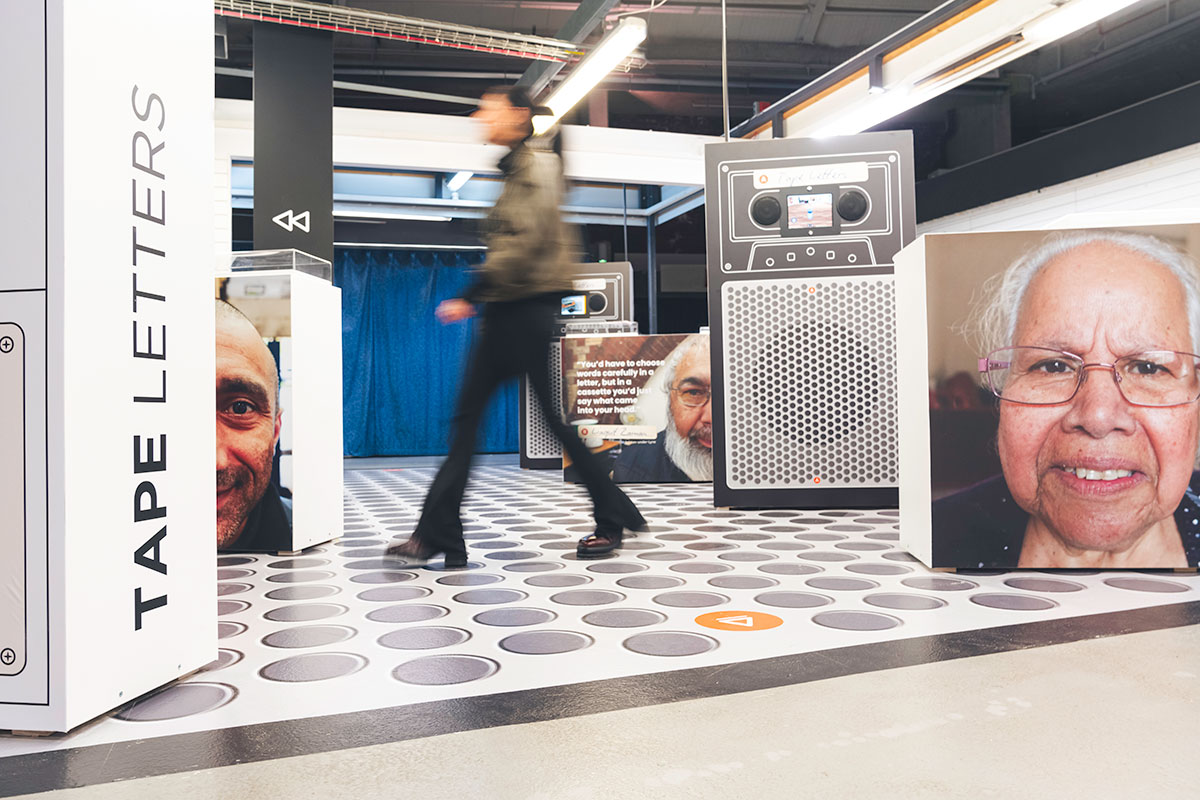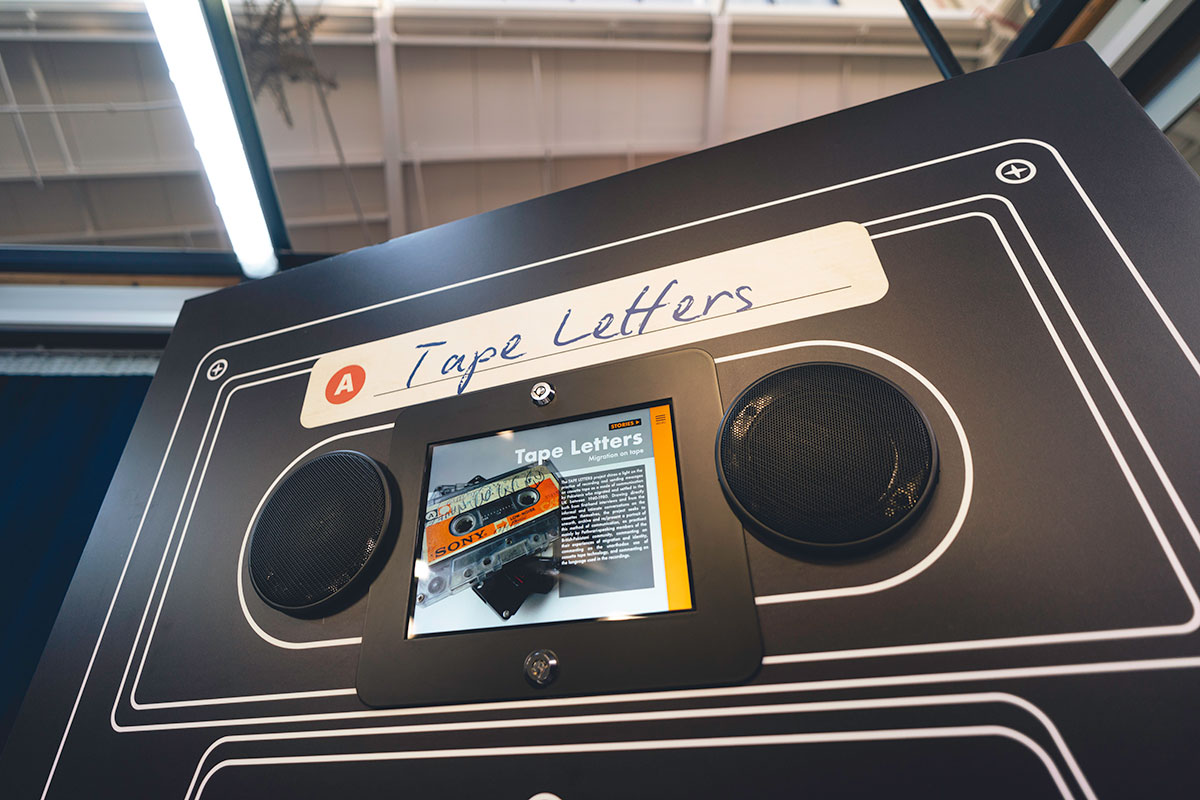Tape Letters England
Current:
Tape Letters: Ashton Library
Tape Letters: Ashton platforms the stories of individuals and families from Ashton-under-Lyne who used cassettes as a mode of communication between 1960-80s. Visitors can listen to recordings, read transcripts and see images from the local community. Originally exhibited in the heart of Ashton Indoor Market, it transferred to the library in July 2024.
Delivered by Modus Arts in partnership with the Heritage Fund, Arts Council England, Tameside Council, and the UK Shared Prosperity Fund.
Tape Letters: Paris
Tape Letters is currently being exhibited as part of the Migrations exhibition at Musée de l’Homme, Paris, France. Curated by Eléonore Gros. It is available until May 2025 before touring globally.
Past:
The exhibition includes the projects’ multi-lingual, inter-generational, and international scope. An important production and curatorial consideration is the involvement and engagement of the archive contributors, whose voices and experiences aren’t typically reflected or represented in formal gallery settings.
The Rich Mix in London, the People’s History Museum in Manchester, and the Bishopsgate Institute in London were chosen as our original exhibition partners, with site-specific approaches deployed in each space respectively.
At the Rich Mix, large-format prints were displayed on the walls of the central gallery space, alongside the installation of an interactive app and a film projection.
At the People’s History Museum, large-scale standalone display boards were strategically placed in the central hall, accompanied by an eight-speaker circle relaying a series of sound poems, display cabinets containing physical cassettes and cassette players, and a variety of long-form videos displayed on digital screens.
At the Bishopsgate Institute’s Library, large-format prints were suspended from the central balcony, with the content focusing entirely on the archival aspect of the project.
Modus Arts is specifically interested in the potential of sound as a creative medium, and the Tape Letters archive provided a rich source of audio material to engage with. The heritage collection and oral history content converged most fully through the immersive multi-speaker sound installation, where audiences were presented with five sound vignettes inspired and drawn directly from the archive. Several creative approaches were taken in the sonification of the pieces, ranging from the spatialisation of audio footage taken directly from the cassettes to the placement of multi-lingual interviews, to comparative field recordings, and to experimental sound compositions drawing from the materiality of the magnetic tape itself.
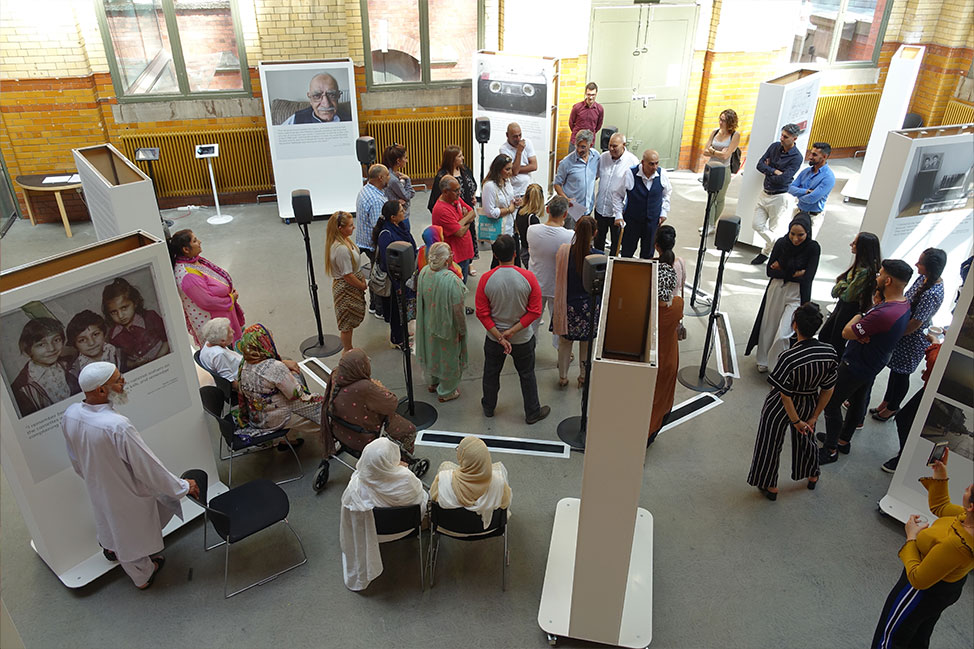
Tape Letters Scotland
- Tape Letters Scotland – Museum of Edinburgh, until 23 Feb 2025
- Tape Letters Scotland – Tramway, Glasgow, until 31 Jan 2025
- Tape Letters Scotland – Dundee Central Library, until 31 Dec 2024* Extended to 31 Jan 2025
The Tape Letters Scotland exhibition opened at the Museum of Edinburgh, followed by the Tramway in Glasgow and concluded at the Dundee Central Library, showcasing the rich oral histories of Scottish-Pakistani communities through a series of participatory exhibitions.
Designed by Kevin Lloyd from KL Studio, renowned for their expertise in museum, heritage, and cultural exhibitions, the exhibitions highlight the unique use of cassette tapes as a medium for storytelling. Various approaches were taken regarding physical exhibits, including site-specific inter-disciplinary exhibitions and sound design incorporating the projects’ multi-lingual, inter-generational, and international scope. Modus Arts is particularly interested in the creative potential of sound as a medium, and the Tape Letters archive provided a rich source of audio as source material from which to draw.
A vital production and curatorial consideration was the involvement and engagement of Tape Letters Scotland archive contributors, whose voices aren’t typically reflected or represented in formal gallery settings.
THE TAPE LETTERS OUTPUTS:
● Apps
● Archive
● Digital Exhibition
● Learning Resources
● Photo Series
● Physical Exhibitions
● Podcast
● Poetry Booklet
● Project Booklet
● Radio Series
● Sound Installation
● Talks & Events
● Videos
Tape Letters England
Current:
Tape Letters Ashton Indoor Market
Tape Letters: Ashton platforms the stories of individuals and families from Ashton-under-Lyne who used cassettes as a mode of communication between 1960-80s. In the heart of Ashton Indoor market, visitors can listen to recordings, read transcripts and see images from the local community.
Delivered by Modus Arts in partnership with the Heritage Fund, Arts Council England, Tameside Council, and the UK Shared Prosperity Fund.
Tape Letters is currently being exhibited as part of the Migrations exhibition at Musée de l’Homme, Paris, France. Curated by Eléonore Gros. It is available until May 2025 before touring globally.
Past:
The exhibition includes the projects’ multi-lingual, inter-generational, and international scope. An important production and curatorial consideration is the involvement and engagement of the archive contributors, whose voices and experiences aren’t typically reflected or represented in formal gallery settings.
The Rich Mix in London, the People’s History Museum in Manchester, and the Bishopsgate Institute in London were chosen as our original exhibition partners, with site-specific approaches deployed in each space respectively.
At the Rich Mix, large-format prints were displayed on the walls of the central gallery space, alongside the installation of an interactive app and a film projection.
At the People’s History Museum, large-scale standalone display boards were strategically placed in the central hall, accompanied by an eight-speaker circle relaying a series of sound poems, display cabinets containing physical cassettes and cassette players, and a variety of long-form videos displayed on digital screens.
At the Bishopsgate Institute’s Library, large-format prints were suspended from the central balcony, with the content focusing entirely on the archival aspect of the project.
Modus Arts is specifically interested in the potential of sound as a creative medium, and the Tape Letters archive provided a rich source of audio material to engage with. The heritage collection and oral history content converged most fully through the immersive multi-speaker sound installation, where audiences were presented with five sound vignettes inspired and drawn directly from the archive. Several creative approaches were taken in the sonification of the pieces, ranging from the spatialisation of audio footage taken directly from the cassettes to the placement of multi-lingual interviews, to comparative field recordings, and to experimental sound compositions drawing from the materiality of the magnetic tape itself.

Tape Letters Scotland
- Tape Letters Scotland – Museum of Edinburgh, until 23 Feb 2025
- Tape Letters Scotland – Tramway, Glasgow, until 31 Jan 2025
- Tape Letters Scotland – Dundee Central Library, until 31 Dec 2024
The Tape Letters Scotland exhibition opened at the Museum of Edinburgh, followed by the Tramway in Glasgow and concluded at the Dundee Central Library, showcasing the rich oral histories of Scottish-Pakistani communities through a series of participatory exhibitions.
Designed by Kevin Lloyd from KL Studio, renowned for their expertise in museum, heritage, and cultural exhibitions, the exhibitions highlight the unique use of cassette tapes as a medium for storytelling. Various approaches were taken regarding physical exhibits, including site-specific inter-disciplinary exhibitions and sound design incorporating the projects’ multi-lingual, inter-generational, and international scope. Modus Arts is particularly interested in the creative potential of sound as a medium, and the Tape Letters archive provided a rich source of audio as source material from which to draw.
A vital production and curatorial consideration was the involvement and engagement of Tape Letters Scotland archive contributors, whose voices aren’t typically reflected or represented in formal gallery settings.

